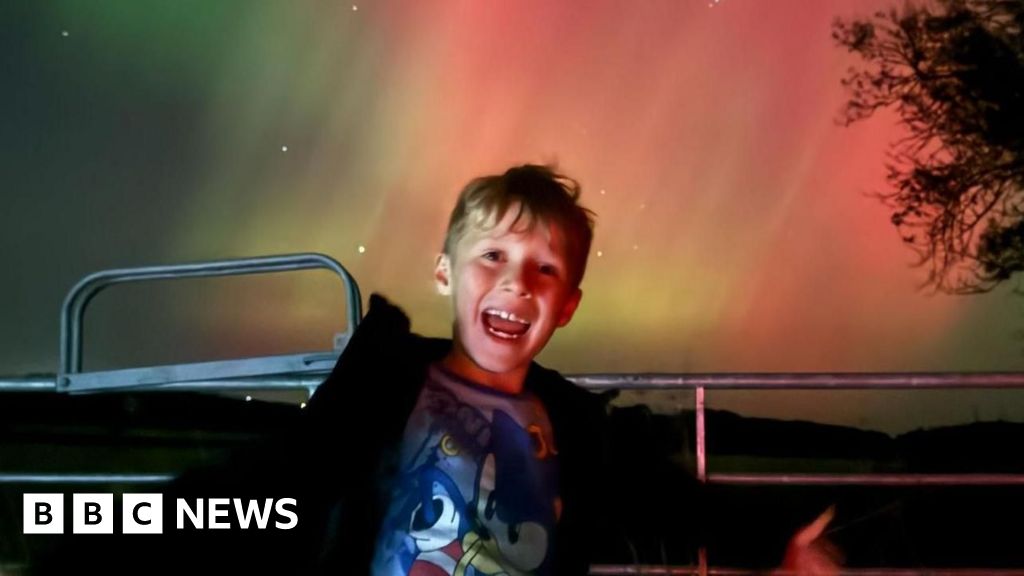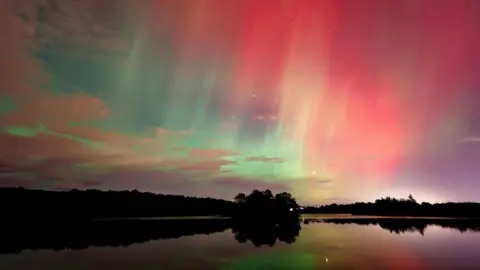 KilsythCatP/BBC Weather Watchers
KilsythCatP/BBC Weather Watchers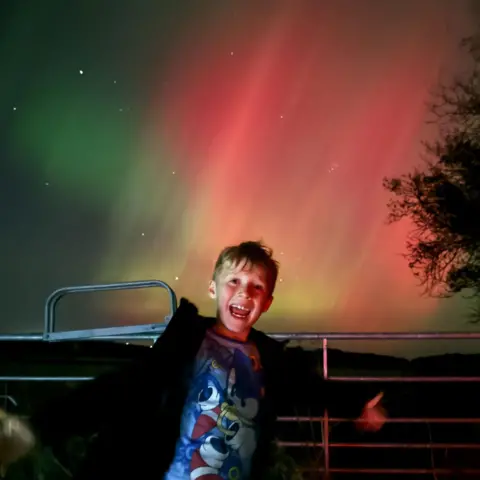 Emma Paliczka
Emma PaliczkaPowerful displays of the Northern Lights were visible from across Scotland overnight.
Clear night skies provided the best opportunities for seeing the space weather, also known as aurora borealis.
The lights are caused by charged particles from the sun hitting gases in the Earth’s atmosphere, and overnight were visible as far south as Buckinghamshire and London.
The colours are picked up by cameras, including those fitted to mobile phones.
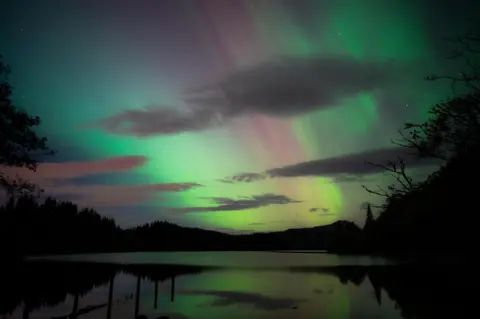 Reissmcguire/BBC Weather Watchers
Reissmcguire/BBC Weather Watchers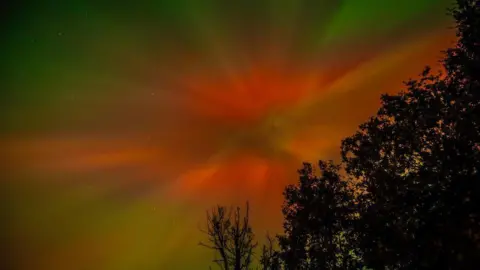 Georgyman/BBC Weather Watchers
Georgyman/BBC Weather WatchersThe Met Office said the overnight displays were linked to activity on the sun on Wednesday and resulted in severe geomagnetic storms.
Forecasters said the chances of seeing the aurora would gradually ease through Friday, and would become increasingly confined to northern latitudes by Sunday.
UK sky-watchers on Monday night were treated to the rare phenomenon known as Steve, a relatively new scientific discovery that looks like the aurora.
Its name means Strong Thermal Emission Velocity Enhancement.
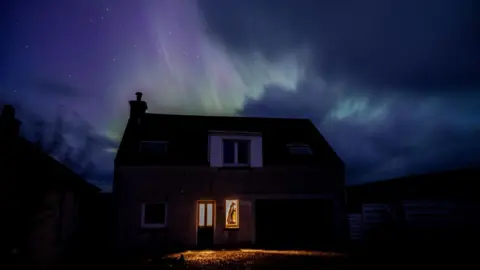 Mrs Brown/BBC Weather Watchers
Mrs Brown/BBC Weather Watchers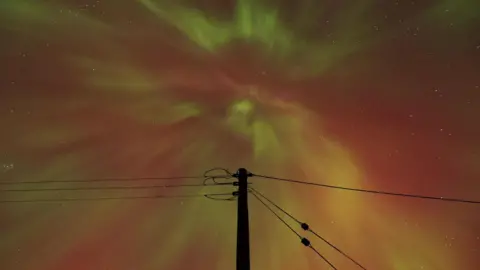 Monika Focht/BBC Weather Watchers
Monika Focht/BBC Weather Watchers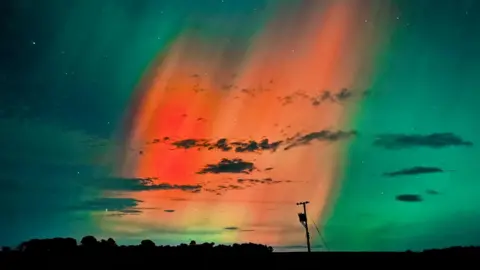 Pia/BBC Weather Watchers
Pia/BBC Weather Watchers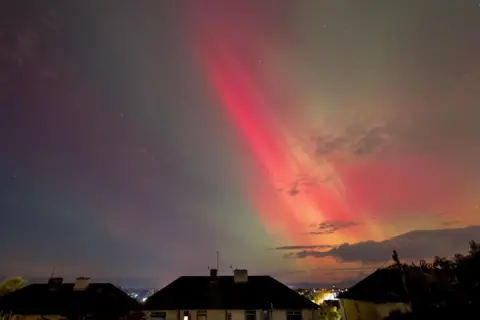 SSiglov/BBC Weather Watchers
SSiglov/BBC Weather Watchers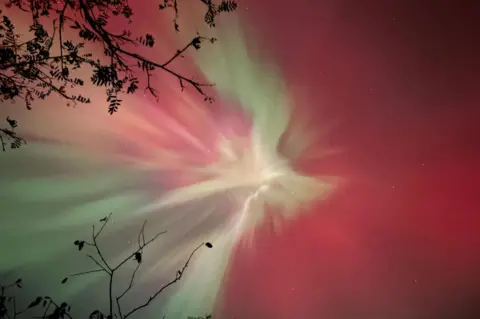 Rob/BBC Weather Watchers
Rob/BBC Weather WatchersIn a forecast earlier this week, British Geological Survey (BGS) said there had been the possibility of a G4 category geomagnetic storm overnight.
G4 is the second highest rating on the scale BGS uses and it signifies a severe storm.
Dark autumn and winter nights offer the best chance of seeing displays – if skies are clear – and there are websites, apps and social media groups providing forecasts and alerts for when they might occur.
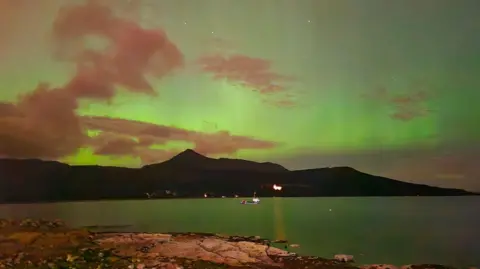 Fee Proctor
Fee Proctor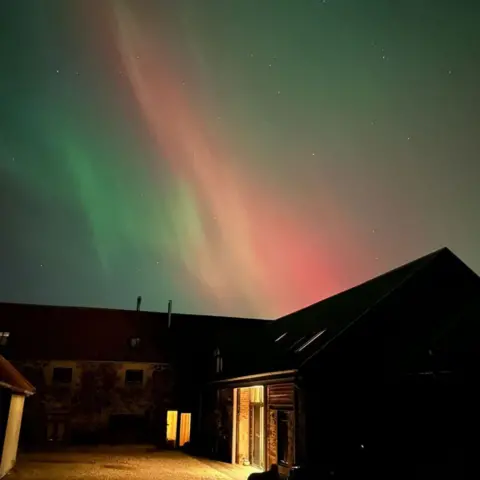 Stuart Riddell
Stuart Riddell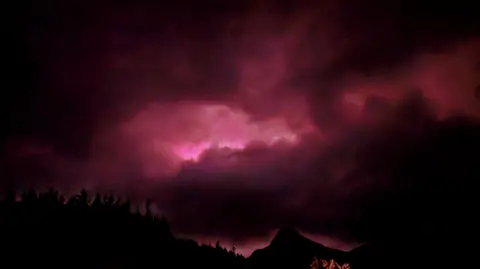 Muddy-Paws/BBC Weather Watchers
Muddy-Paws/BBC Weather Watchers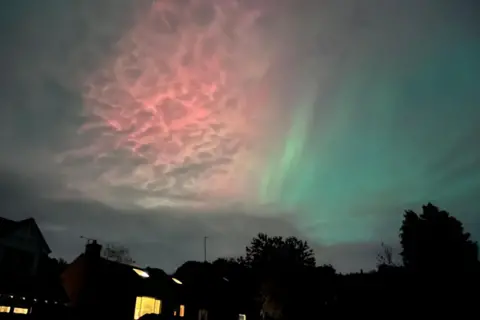 TheGrahamslaws/BBC Weather Watchers
TheGrahamslaws/BBC Weather Watchers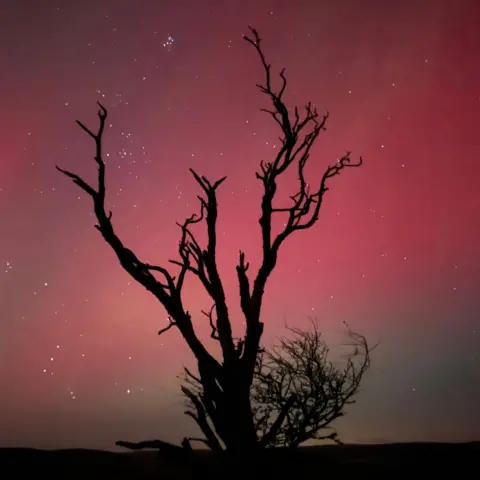 Vicky A/BBC Weather Watchers
Vicky A/BBC Weather Watchers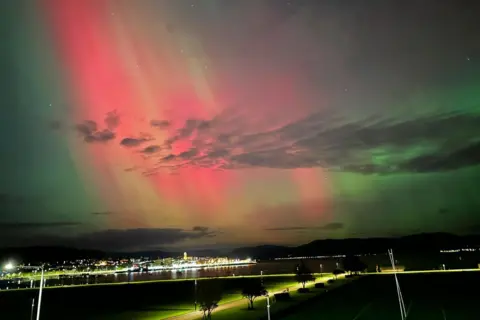 Siberian_ogre/BBC Weather Watchers
Siberian_ogre/BBC Weather Watchers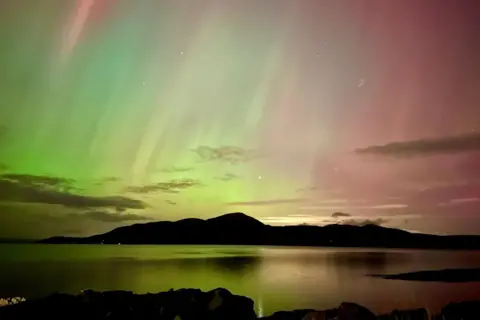 TealKat/BBC Weather Watchers
TealKat/BBC Weather Watchers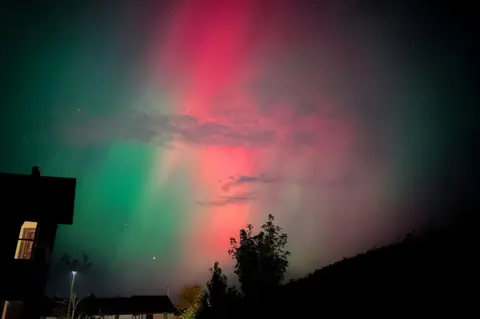 Tinny/BBC Weather Watchers
Tinny/BBC Weather Watchers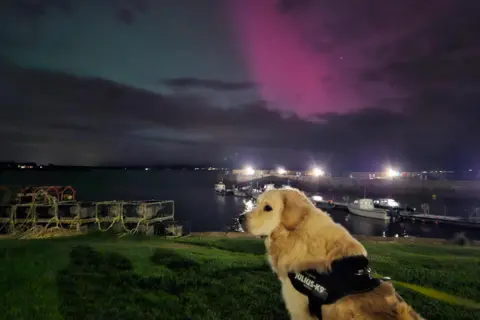 Olly79/BBC Weather Watchers
Olly79/BBC Weather Watchers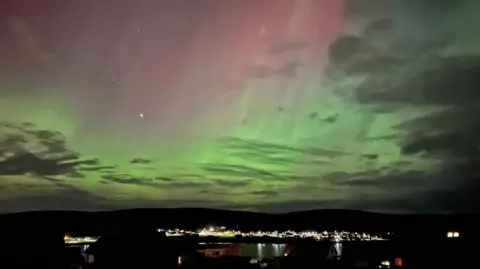 Michelle/BBC Weather Watchers
Michelle/BBC Weather Watchers

